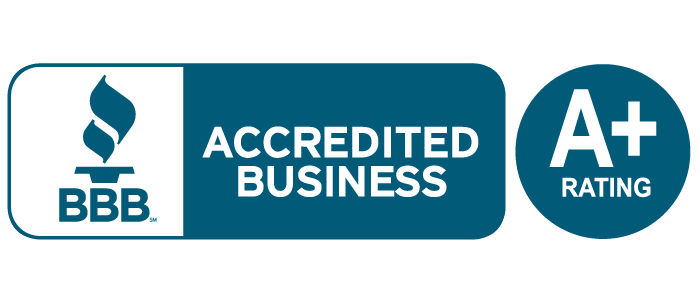
If you’re feeling overwhelmed by debt and considering bankruptcy, you may be worried about losing the money you’ve saved for retirement. You’re not alone—this is one of the most common questions we hear. Fortunately, Canadian bankruptcy laws generally protect RRSPs so that most people can keep their retirement savings, even if they need debt relief.
Below, I break down how RRSPs are treated in a bankruptcy, explain which other pension or savings accounts are safe, and outline what happens if you made recent contributions.
Table of Contents
Most RRSPs Are Protected in Bankruptcy
Canadian bankruptcy rules, specifically section 67 (1) (b.3) of the Bankruptcy and Insolvency Act (BIA), exempt RRSPs from seizure in a bankruptcy, with the exception of contributions made within the 12 months prior to filing. Essentially, the law aims to protect the majority of your retirement savings while still preventing a last-minute “dump” of money into an RRSP shortly before bankruptcy.
If you haven’t contributed to your RRSP in the last 12 months, you won’t lose any part of your registered retirement savings.
Other Savings and Pension Plans
Many workplace pensions and some registered accounts also enjoy special protections:
Company or Government-Sponsored Pension Plans (RPPs)
All company or government-sponsored pension plans are generally protected, regardless of when the contribution was made. Both employer and employee contributions are safe from seizure.
Locked-In Pensions or LIRAs
Locked-in retirement accounts cannot be seized in a bankruptcy. Because withdrawals are not allowed until retirement, the Trustee can’t access these funds on behalf of creditors.
RRIFs, DPSPs, and RDSPs
A Registered Retirement Income Fund (RRIF) or a Deferred Profit Sharing Plan (DPSP) usually follows the same rule as RRSPs: contributions made in the last 12 months can be at risk.
A Registered Disability Savings Plan (RDSP) may also be protected. Courts have generally upheld that funds in an RDSP are off-limits to creditors.
Three Real Life Examples
Let’s look at three common scenarios:
Example 1: Your employer takes 5% of your pay and puts it in a registered company pension. All contributions are yours to keep, even those made within the last year and those matched by your employer.
Example 2: You have a Registered Retirement Plan with a life insurance component with a company such as Sun Life and your spouse is a beneficiary. These plans are yours to keep, including contributions made in the last year.
Example 3: You contribute 3% of your pay every payday to your own individual RRSP through an automatic savings program. Contributions made to your RRSP in the last 12 months before filing bankruptcy are at risk of seizure by the trustee.
The 12-Month Rule for Recent Contributions
If you contributed to an RRSP (or a similar plan) in the past year, you have two main options in a bankruptcy:
- Allow the Trustee to withdraw those contributions from the plan to pay creditors.
- Pay extra into the bankruptcy estate (a “buy-back”) for the value of those contributions net of taxes.
- File a consumer proposal to protect assets including recent contributions.
What About TFSAs and RESPs?
Not all registered savings have the same legal protection in a bankruptcy. In most cases:
- Tax-Free Savings Accounts (TFSAs): These are not an exempt asset in a personal bankruptcy. The balance is available to creditors and must be surrendered in a bankruptcy.
- Registered Education Savings Plans (RESPs): The plan holder files bankruptcy, an RESP can be seized. Often, you can “buy back” the value if you want to preserve those funds for your child’s education.
If preserving a TFSA or RESP is essential, a consumer proposal may be a better option than bankruptcy. A proposal allows you to settle debts without surrendering assets. A Licensed Insolvency Trustee can explain how this works.
What About a Spousal RRSP?
The BIA applies to RRSPs you own and control. If you file bankruptcy, contributions you made to your spousal plan are not subject to seizure by the trustee. If your wife goes bankrupt, the maximum exposure for her spousal RRSP is the contributions you made in the last 12 months.
Avoid Draining Your RRSP to Pay Debt
When debt feels overwhelming, it’s tempting to cash out an RRSP. In most cases, this just delays the inevitable and leaves you with limited retirement savings. Because your RRSP is generally a protected asset, you’re usually better off keeping it intact and exploring formal debt relief options instead of raiding your retirement fund to pay unsecured debts.
Protect Your Future: Bankruptcy or a Consumer Proposal
Filing bankruptcy is often the quickest way to eliminate debt, but if you have significant RESPs, TFSAs, or recent RRSP contributions that you want to protect, a consumer proposal may be the better fit:
- Keep Your Savings: A proposal lets you settle debts without surrendering TFSAs, RESPs, or recent RRSP contributions.
- Lower Monthly Payments: You offer a manageable portion of what you owe, payable over up to 5 years.
- Stop Creditor Actions: Like a bankruptcy, a proposal is legally binding, so it halts collection calls and wage garnishments.
Not sure which path is right for you? Our Licensed Insolvency Trustees can walk you through both options—helping you safeguard your future while you break free from debt.
Get a Fresh Start—And Keep Your Retirement Savings
You don’t have to face debt alone or sacrifice your future security. Our Licensed Insolvency Trustees are here to help you explore every option. We’ll walk you through the bankruptcy process, show you how to protect your retirement, or discuss alternatives like consumer proposals.
Need more advice? Book a free, no-obligation consultation with us today. We’ll help you keep what matters most while finding the best solution to deal with your debts.





